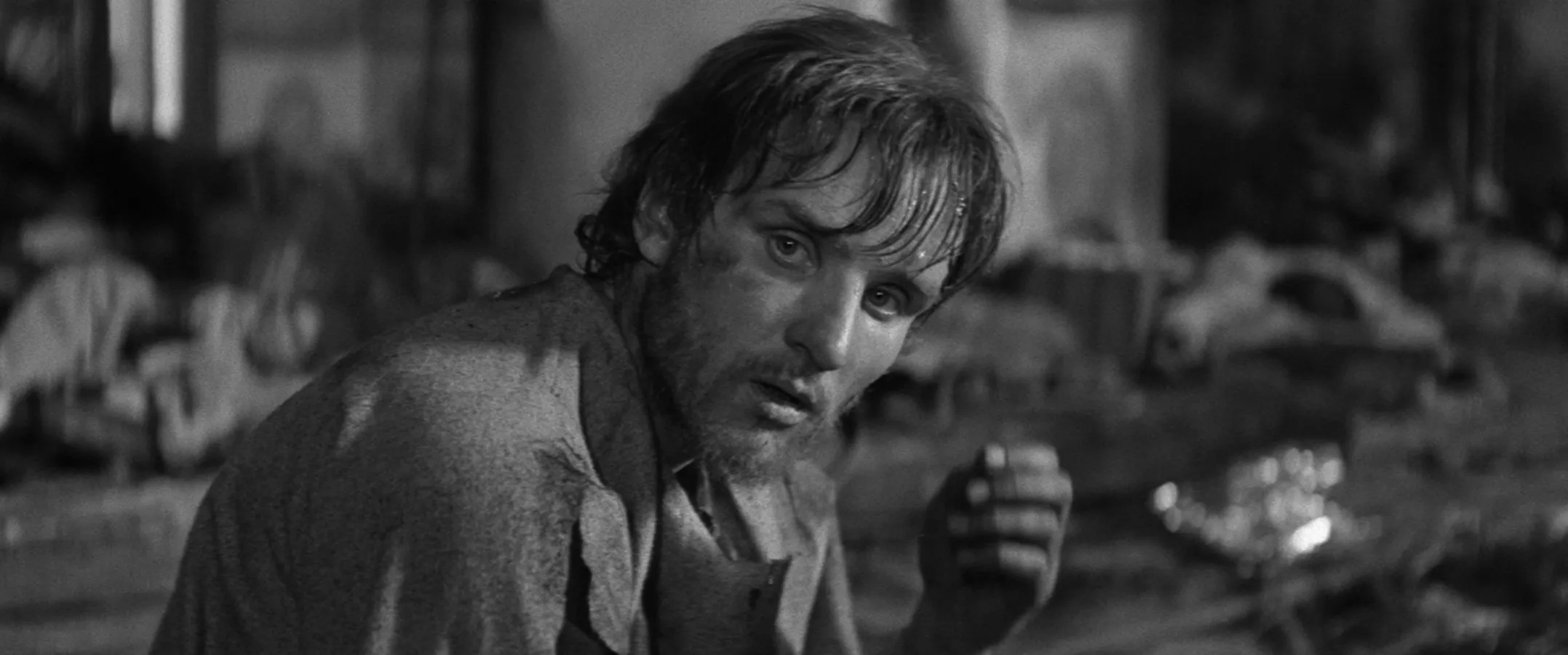Many art historians believe that Andrei Rublev was the greatest painter of the 15th century, and his religious icons still adorn churches throughout Russia. In analyzing Rublev’s art, it would be strange to call him a romantic. His images of Jesus, the Virgin Mary and the disciples are not sensuous or rhapsodic. Yet, the writer Ambrose Bierce defined romance in his 1906 work “The Devil’s Dictionary” as that which “owes no allegiance to the God of Things as they are.” Rublev’s icons may not have been erotic or exotic, but they were certainly ethereal.
In his 1966 film about Rublev, Andrei Tarkovsky emphasizes that Rublev’s art does not reflect reality. Tarkovsky envisions Rublev’s medieval Russia as a harsh, inhuman locale. Bestial Tartars roam the countryside, slaughtering innocent Russians. The Russians themselves, however, are not much better. Powerful lords cruelly abuse their subordinates. The poor peasants are squalid and simple-minded. They seek salvation from the Orthodox church, but the clergy is often corrupt and inhospitable. By portraying Rublev’s times in such a spectacularly harsh light, Tarkovsky forces viewers to reconsider the painter’s oeuvre. Rublev constantly depicted miracles in his work, but it seems a miracle that his work was able to come out of this brutal milieu. Ultimately, Tarkovsky’s “Andrei Rublev” examines the artist’s capability to reconfigure reality.
“Andrei Rublev” is not a traditional biopic. Tarkovsky neglects to show many major events of Rublev’s life. For example, from watching the film, it would be impossible to know that Rublev lived for many years on the outskirts of Moscow. Important commissions are mentioned only in passing, and Tarkovsky does not show Rublev creating his masterpieces at the Trinity Cathedral. Rather, Tarkovsky renders eight separate episodes from Rublev’s life. Two of them seem to exemplify the film’s commentary on artistry. Rublev is not the foremost figure in these scenes. He simply happens to be present when a jester is dragged off to prison or when some pagans are persecuted.
Yet, these segments illustrate something more profound than the facts of Rublev’s life. Instead, they reflect different facets of the artist’s character. The jester’s tribulations remind us that the artist is a fool. In these scenes, Tarkovsky echoes the philosophy of the American artist Winslow Homer. In 1868, Homer contributed an illustration to the magazine “Harper’s Weekly,” “Fireworks on the Night of the Fourth of July.” Most of Homer’s crowd reverently watches the pyrotechnic display, but in the foreground, Homer included a self-portrait. This doppelganger wears a titanic top hat, and a stray rocket has hit him on the head. The top hat slides down his face, completely covering his eyes. Compared to his fellow spectators, Homer seems like a jester. In later parts of Tarkovsky’s film, Rublev seems foolish too. He wastes time vacillating about what to paint. Just as the jester is arrested, Rublev’s reputation may be ruined if he cannot carry out the commission. Miraculously, Rublev is finally able to start working. However crazy he may have seemed beforehand, when he is finished, it is undeniable that he has made a masterpiece.
Likewise, when he comes into contact with a group of pagans, Rublev rushes to observe their rituals. In this moment, he exhibits the artist’s fascination with alien cultures. He is not unlike the late 19th-century French painter Paul Gauguin. In 1890, Gauguin paid his first visit to the South Pacific island of Tahiti. He recorded his observations upon arrival. Gauguin went to Tahiti to escape the diseased West, but as he noted in his diary, one woman’s “majestic sculptural form” made him “think of the Triangle of the Trinity.”
While Gauguin proclaimed that he had discovered utopia in Polynesia, Rublev witnesses a horrific scene. Some mysterious rites have been interrupted, and a nude woman runs from vengeful Christians. As he sits in a boat, Rublev watches her reach the riverbank. Then, she starts swimming. She struggles to keep her head above water, but she is not terrified. With a despondent expression on her face, she continues fighting the current. The scene fades out.
This episode may seem detached from Rublev’s gilded images, but towards the end of the film, Tarkovsky features details from the painter’s sublime works. Rublev’s most famous icon is his depiction of the Trinity. Ostensibly, he portrays the three angels who visited Abraham, but through symbolism, he suggests the power of the Holy Trinity. These figures, however, do not seem omnipresent or omniscient. Rather, like the helpless woman, they appear resigned. It is as if Rublev has transplanted her face onto the melancholy visages of these angels. Like Gauguin, he sees the sacred elements of reality.
Yet, painters are not the only artists able to transfigure the real. Even as he unflinchingly captures a crude and cruel world, Tarkovsky crafts transcendent moments. After the jester is taken away, Tarkovsky calls our attention to a cluster of tranquil trees, shrouded in mist. When the pagan swims for her life, Tarkovsky does not focus on her struggle. Instead, he tilts the camera upward and reveals that she is a lone figure in an impressive idyll. By closing the episode on this image, Tarkovsky asserts that this natural beauty is more significant than the woman’s fate. Although Tarkovsky does not shirk from the unpleasantness of medieval times, he is not enslaved by reality. Like the icon painter whose life he documents, Tarkovsky is also a romantic in Bierce’s sense. Because he owes “no allegiance to the God of things as they are,” he is able to create a heavenly work of art.
Contact Amir Abou-Jaoude at amir2 ‘at’ stanford.edu.
